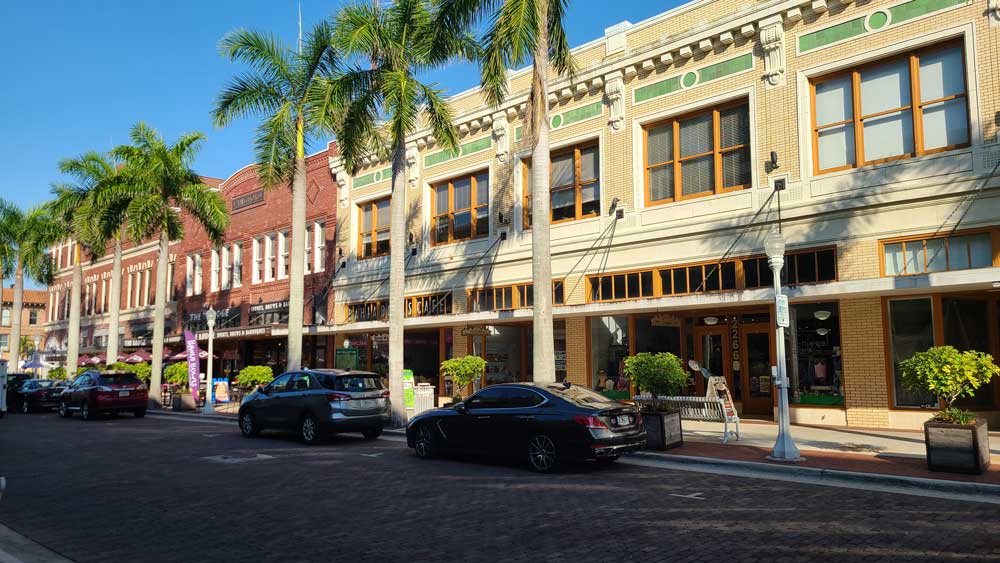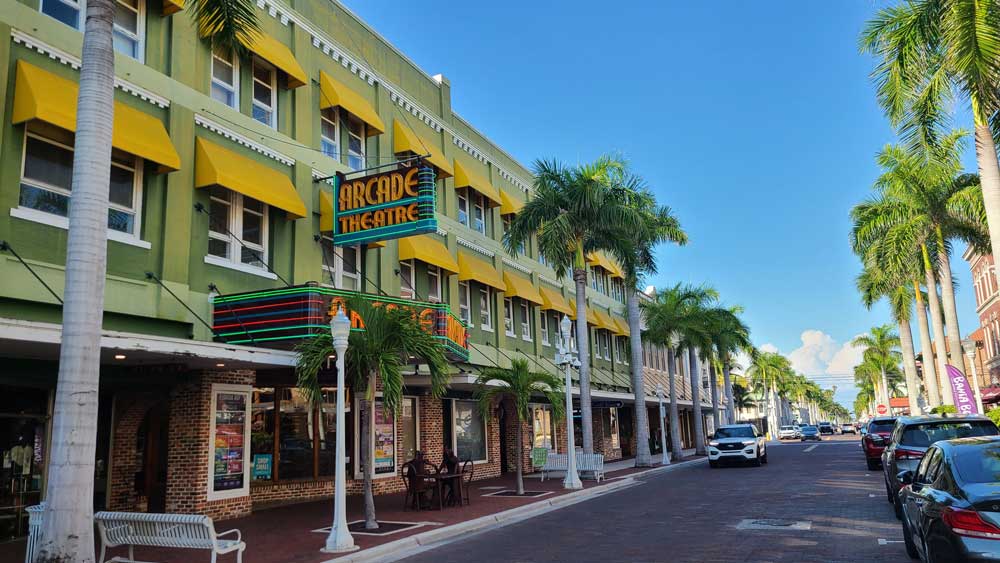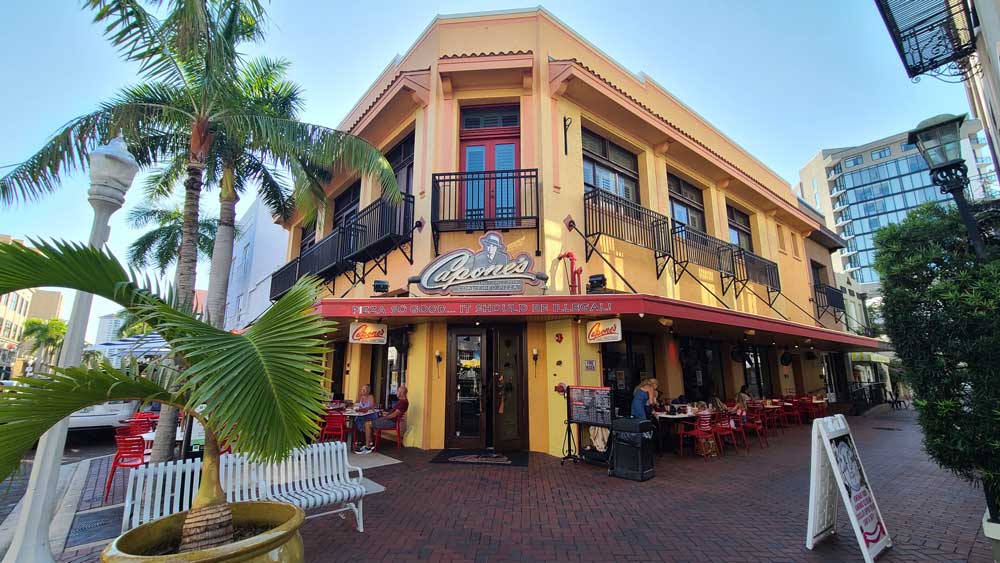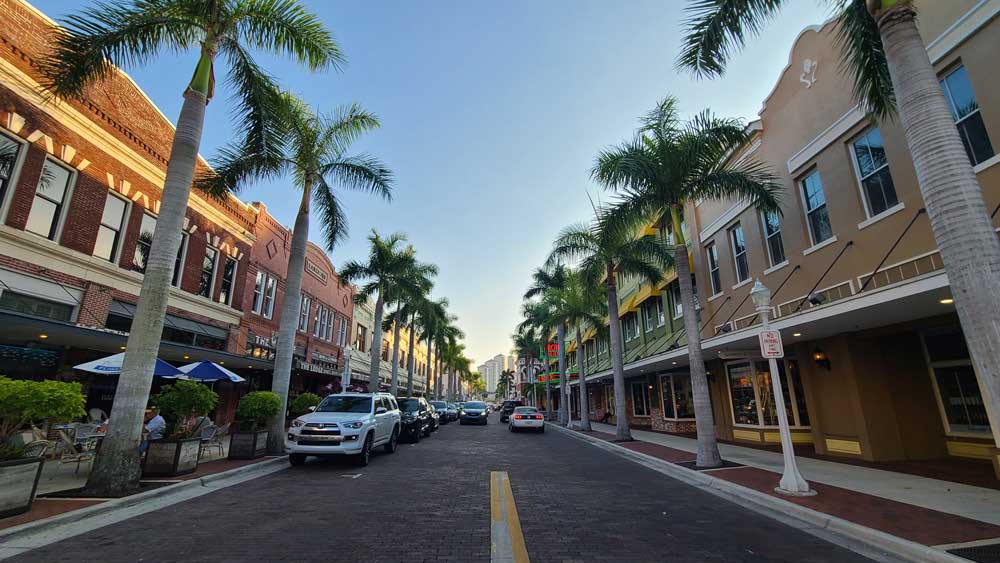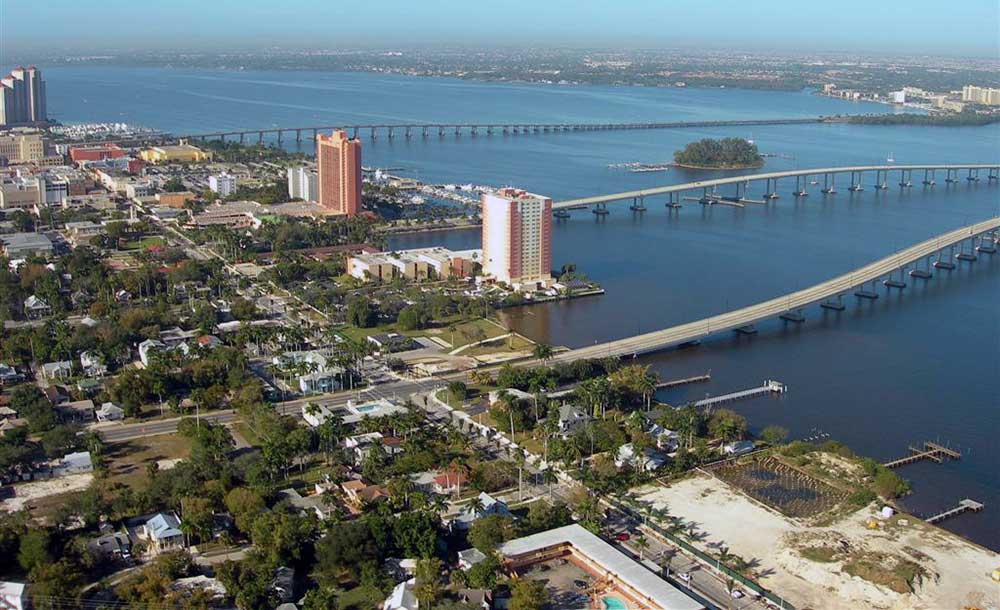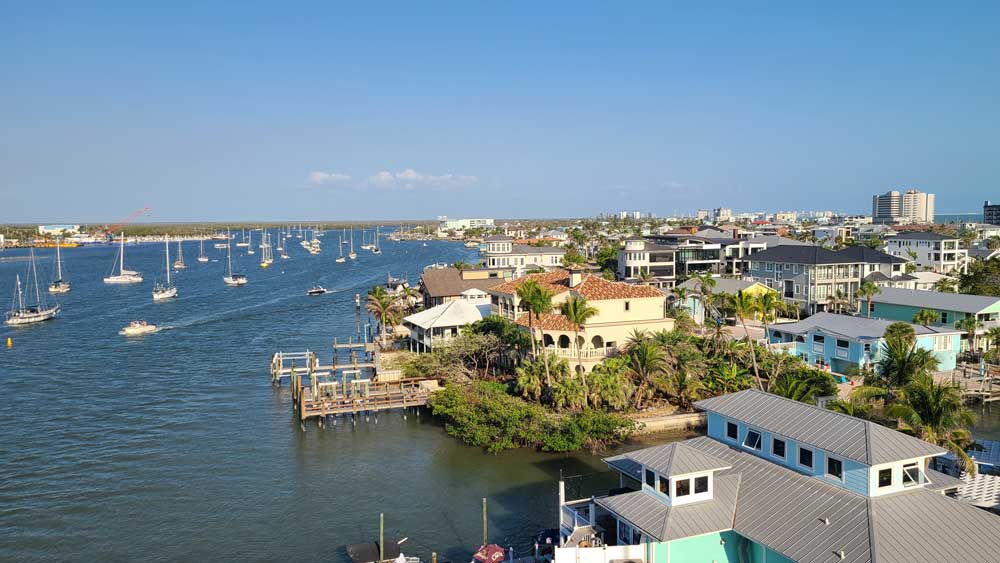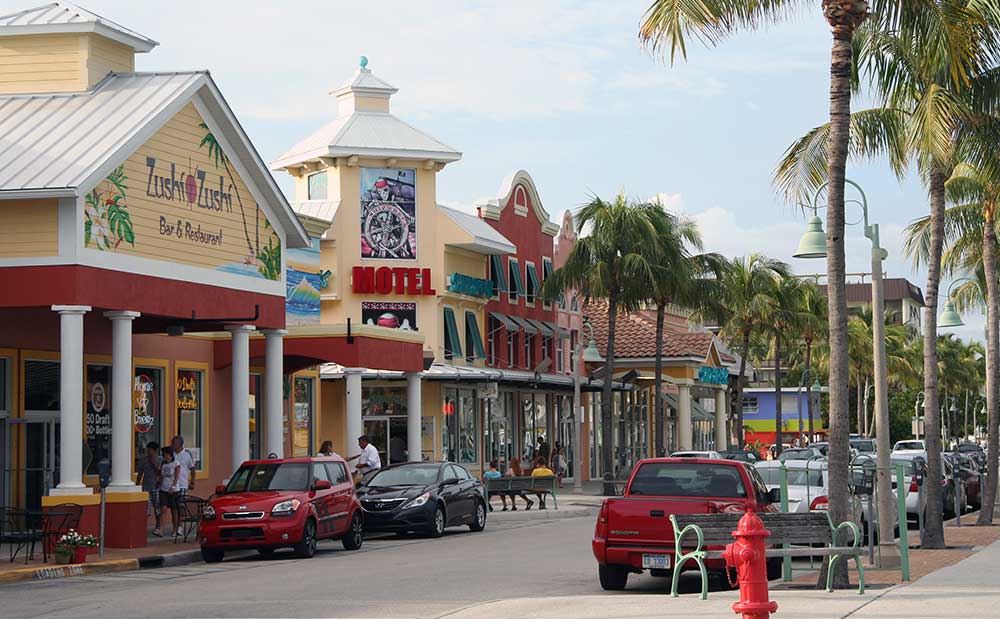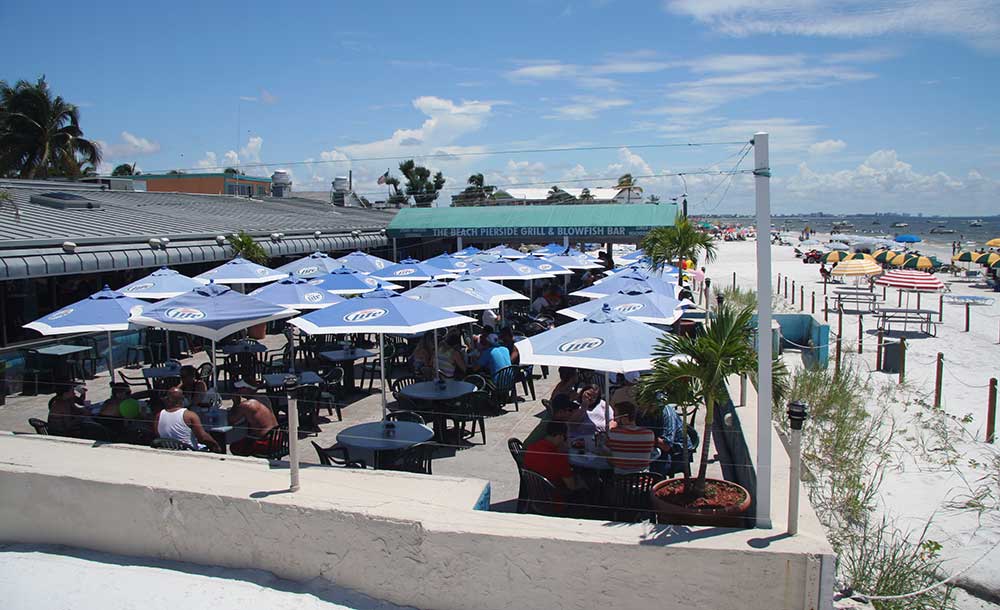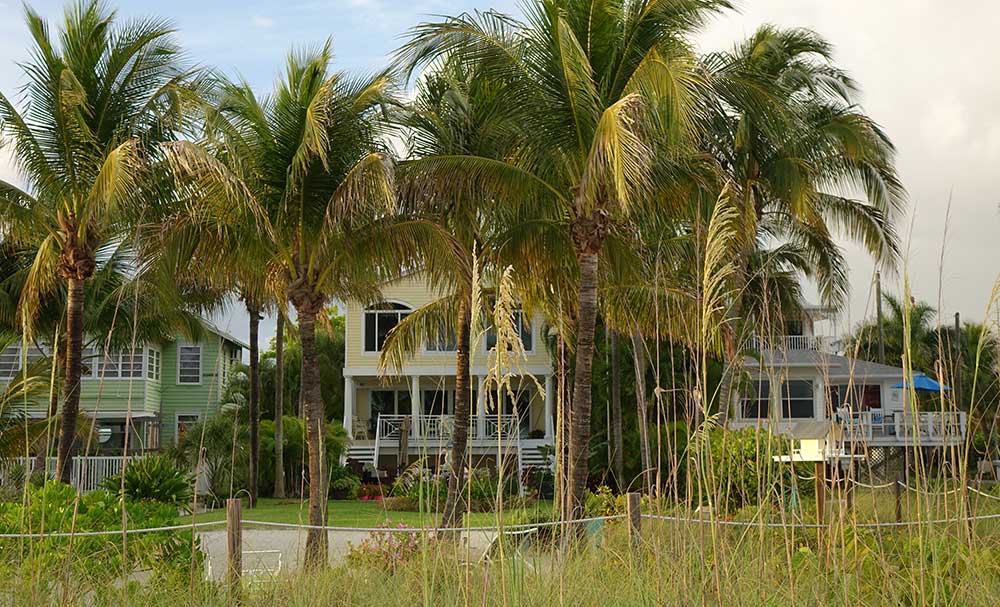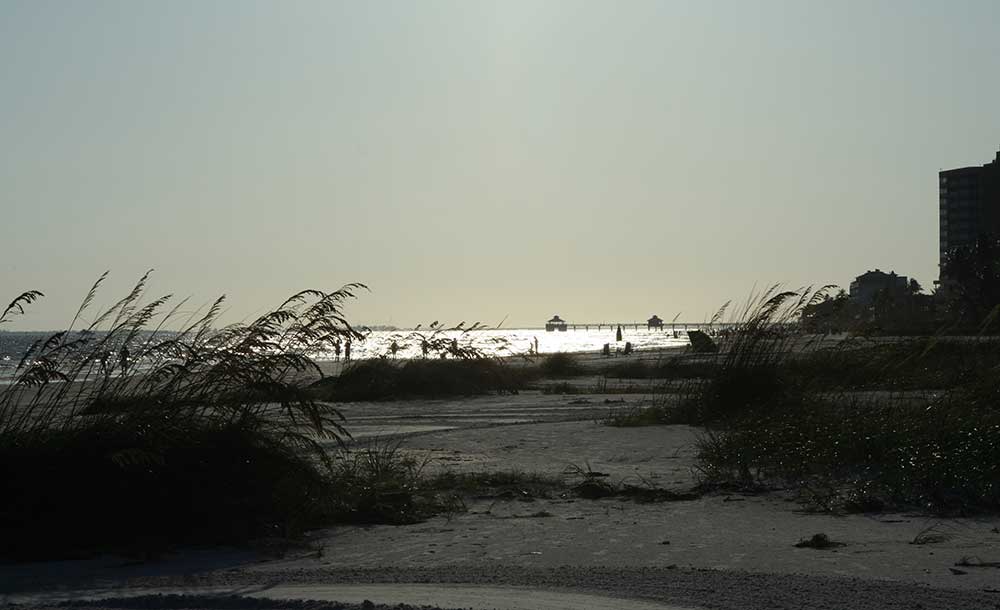Fort Myers Fort Myers Beach | Sun Worshippers Inventors
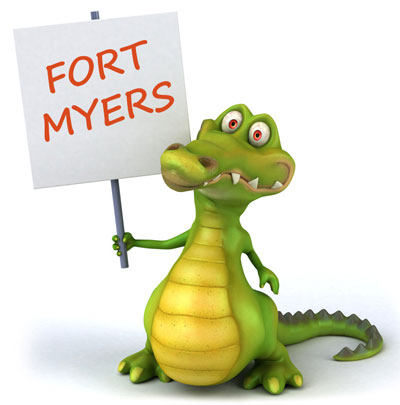
Fort Myers combines historical charm with tropical flair. Florido guides you through the city on the Caloosahatchee River with its relaxed atmosphere and the famous winter residences of Edison and Ford. Fort Myers Beach is still recovering from Hurricane Ian, but the beautiful beaches and warm Gulf waters show: The spirit here can’t be defeated!
Fort Myers – the most Important at a Glance
- Relaxation on the Gulf of Mexico – Wide, white sandy beaches and warm water invite you to relax.
- Best travel time – November to April with pleasant temperatures and little rain.
- Nature Wildlife – Perfect for dolphin watching, kayak tours, and sunsets right on the beach.
- After Hurricane Ian – Many areas are still being rebuilt, but the first restaurants, shops, and accommodations have reopened.
- Excursions Surroundings – Sanibel Captiva Island and Lovers Key State Park are popular destinations for nature lovers and beach fans.
Climate and Weather
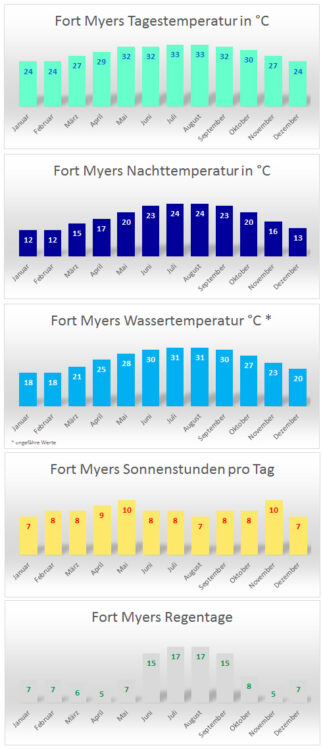
Information Route Planner
| Size | Fort Myers: 40 mi² / Fort Myers Beach: 6.1 mi² |
| Population | 95,000 (as of 2023) |
| County | Lee County |
| Coordinates | 26° 38 “81° 51” W |
| Area code | +1 239 |
| Visitor Center | Lee County Visitor Center |
The Perfect Day in Fort Myers
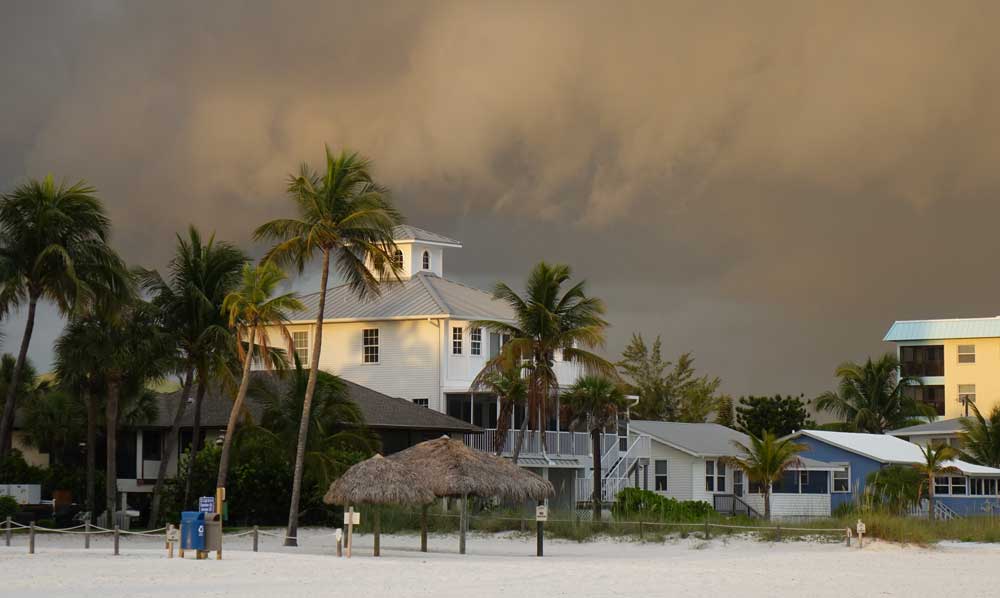
If we’ve conveniently booked our accommodation in one of the reopened motels or hotels in Fort Myers Beach, we best wake up with a morning swim in the Gulf of Mexico. Equally numerous are the small restaurants and bars here, which often offer a typical American breakfast.
Refreshed, we make our way to the Edison Ford Winter Estate in Fort Myers, where we immerse ourselves in times past and feel just like the successful inventor Thomas Edison. He used to spend his winters here annually, which also offers botany enthusiasts a “treat”.
In the afternoon, we struggle a bit with the choice of whether to go on an extensive shopping spree at Edison Mall, Miromar Outlets, or the newest of all three, Coconut Point. Meanwhile, we occasionally check the time to make sure we’re back in Fort Myers Beach in time for sunset worship.
This is literally celebrated here on the beach or can be enjoyed in peace on a more secluded beach a bit further towards Bonita Springs – depending on how you prefer it. Afterwards, it’s party time on the beautiful surf and sand beach.
Activities Highlights around Fort Myers
3075 Sanibel Captiva Rd, Sanibel, FL 33957
Beaches
No post found!
Nature Parks
No post found!
Attractions
No post found!
Events
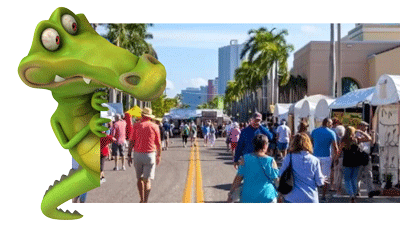
Fort Myers – City of Palms with Dream Beach as a Neighbor
Fort Myers is more than just a stopover on the way to the beaches – it’s a city full of history, palm-lined avenues, and genuine Florida flair. Located directly on the Caloosahatchee River, the city combines colonial heritage with modern quality of life.
Particularly famous is the historic Edison and Ford Winter Estates, where Thomas Edison and Henry Ford once spent their winters. The downtown area – known as the River District – has been extensively restored in recent years. Galleries, cafes, and small boutiques invite you to stroll. Every first Friday of the month, the old town transforms into a cultural highlight during the Art Walk with live music and art exhibitions. Nature lovers also get their money’s worth: The Six Mile Cypress Slough Preserve is a quiet nature trail through swamps and forests with boardwalks and lookout points.
Today, Fort Myers is a growing city with around 100,000 inhabitants and a noticeable change: new residential complexes, modern infrastructure, a lively downtown, and strong influx numbers – especially from the northern United States. The city is one of the most dynamic regions in Florida, not only in terms of tourism but also economically.
Rapid Reconstruction after Ian
The faster than expected reconstruction after Hurricane Ian has progressed significantly. Many public facilities, roads, and coastal areas have been renewed or expanded. Downtown Fort Myers is vibrant, with new restaurants, craft breweries, and start-ups – a contrast to its historical image. Fort Myers now also plays an important role beyond tourism: The Southwest Florida International Airport (RSW) is seeing growing passenger numbers. The real estate market is booming, fueled by new construction projects and remote work. At the same time, investments are being made in education and healthcare.
Fort Myers is booming. It’s growing, modernizing, and attracting not only tourists but also families, entrepreneurs, and investors. The business-friendly climate offers low taxes, good infrastructure, and high quality of life. Many Germans living here appreciate the proximity to beaches, good medical care, and relatively low cost of living – especially outside the high season.
Fort Myers Beach – Relaxed Lifestyle Still Intact
Just about 25 minutes from downtown lies Fort Myers Beach on Estero Island. This former postcard motif with Caribbean flair has been severely hit by three hurricanes in the last three years. Barely cleaned up after Hurricane Ian, Helene and Milton came around the corner. Before that, the tourist hotspot had been struggling with years-long renovation of Estero Blvd.
The seven-mile long, gently sloping sandy beach for the perfect beach vacation remains. It’s still stunningly beautiful and perfect for families, beach walks, and relaxing beach days. Many restaurants, hotels, and beach sections have already reopened for the umpteenth time, and reconstruction is noticeably progressing. However, former landmarks of beach life, like the beautiful Times Square, are still missing.
Instead, a new scene has developed, reflecting the admirable will of the locals not to give up. A row of food trucks surrounded by chairs and tables under umbrellas offers visitors an extraordinary ambiance. And so it’s moving back into the center of attention: Times Square – the once colorful pedestrian zone with ice cream parlors, souvenir shops, and street artists.
History of Fort Myers
The area around Fort Myers has always benefited from its strategically good location on the Caloosahatchee River. Every group of settlers that settled here recognized and utilized this: The prehistoric Calusa Indians built earth and shell mounds along the riverbank. The combative Seminoles established their villages at this location.
From its mouth at San Carlos Bay, the river widens to almost two miles in the area of today’s downtown Fort Myers. Additionally, there are numerous waterways that the Indians used as escape routes into the vast Everglades. From there, the path to the Atlantic to the Florida Keys in the south and the impenetrable salt marshes near Cape Sable was open.
Ponce de Leon is said to have been the first European in this area. With his arrival, it was first mentioned on a British map around 1700. Fort Myers was initially founded in 1850 as a fort in the fight against the Seminole Indian tribe and named after Colonel Abraham C. Myers, the son-in-law of the fort’s founder and commander. During the American Civil War, the “Battle of Fort Myers” took place on February 20, 1865, which resulted in only one death on the Confederate side. The first settlers established themselves at the already abandoned fort in 1866.
Blockade Runners and Cattle Barons
After the Native American tribes were driven out in the mid-19th century, Confederate blockade runners and cattle barons lived in the Caloosahatchee River valley. They were promised prosperity through trade with the remaining Seminoles and Union soldiers pushing into the country. During the Civil War, Captain Manuel A. Gonzales transported supplies and mail, and subsequently established the first trading post in the abandoned garrison. Here, friendly Seminoles exchanged their animal furs for tobacco, glass beads, and gunpowder.
In 1881, the wealthy Hamilton Diston from Philadelphia came to the Caloosahatchee Valley and decided to drain the swamp. Diston built a connection between Lake Okeechobee and the Caloosahatchee River, allowing steamships to travel from the Gulf of Mexico up to Lake Okeechobee and the Kissimmee River. Fort Myers became independent on March 24, 1886, with a population of 349 at the time.
After the Royal Palm Resort was built as the first winter resort in 1898, the city developed into a popular winter residence for wealthy citizens from the northern states of the USA. The most famous among them are Henry Ford and Thomas Edison. The Ford Edison Winter Estate on McGregor Boulevard once served as their winter residence, which – as mentioned above – can be visited today. The light bulb inventor Edison built his house complete with laboratory and botanical garden between the river and McGregor Boulevard. Edison had the old road planted with stately royal palms, which are still considered landmarks today and gave the city its nickname “City of Palms”.
The Northerners Arrive
At the beginning of the 20th century, many Northerners were also drawn to Fort Myers, investing in land and real estate here. The opening of the Tamiami Trail, connecting Tampa with Miami, led to another boom in the 1920s.
In the 1940s, Fort Myers got its first airport and became home to many soldiers who settled there after their time in the army. The construction of the first bridge over the Caloosahatchee River in 1924 triggered a surge in urban development and made Fort Myers the largest city between Tampa and Miami. The surrounding communities of Fort Myers Beach, North Fort Myers, and Cape Coral followed.
In 1983, the Southwest Florida International Airport was opened, and with it came tourists and even more so-called snowbirds, who escape the winter here with sunshine. Today, the area is often fondly referred to as a retiree’s paradise. However, if you look at the annually popular Spring Break in Fort Myers Beach, you’ll quickly be proven wrong.




